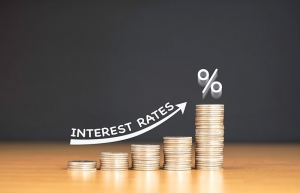Global monetary tightening: issues for emerging markets
US monetary tightening is often bad news for emerging markets. In past episodes, high-interest rates have spilled over to emerging markets, where they have increased borrowing costs, depressed stock markets, triggered capital outflows, weakened currencies, and inflated consumer prices – all of which led to financial crises.
 |
| Patrick Lenain, senior associate at the Council on Economic Policies |
In the early-1980s, the “Lost Decade” in Latin America followed a sharp monetary tightening decided by Fed chairman Paul Volcker.
In the mid-1990s, the “Tequila” crisis in Mexico, which then extended to Russia and East Asia, followed the monetary tightening by Alan Greenspan. In 2013, a sudden reaction of financial markets – the so-called “taper tantrum” – followed Ben Bernanke’s statement about exiting quantitative easing.
Since March, the Fed has embarked on a rapid tightening cycle. US inflation reached 9.1 per cent in June, the highest on record in over 40 years – well above the central bank’s target of 2 per cent.
The Fed has raised its short-term interest rate already four times this year, including two large hikes of 75 basis points, and it has made it clear that more hikes are coming. Market participants expect another hike of 75 basis in September at the next Fed policy meeting. The Fed has also reduced its purchases of financial assets and its balance sheet is now shrinking.
US inflation is not yet under control. A wage-price spiral is emerging, labour shortages are widespread, and consumer demand continues to expand fast. To regain control, the Fed will need to increase its interest rate above the neutral rate. The neutral rate is not known precisely, but most economists agree that it is above the current interest rate of 2.3 per cent.
Similar tightening is underway at the European Central Bank, Bank of England, and Reserve Bank of Australia. This will continue until inflation comes down.
In emerging markets, central banks are facing a dilemma. If they do not follow the global tightening cycle, they will be exposed to capital outflows and currency pressures, as investors move to higher returns in advanced economies. But if they raise interest rates, high borrowing costs and loan delinquencies could put their banking system under stress. Investors will test the resilience of emerging markets and trigger speculative attacks against the most vulnerable.
Having learned lessons from past crises, the central banks of Brazil, Chile, India, Mexico, Poland, South Africa, and more have prepared well. They have raised interest rates to stave off capital outflows without damaging their banking system.
But cracks are appearing elsewhere. The Institute of International Finance recently reported that foreign investors have pulled funds out of emerging markets for five consecutive months – the longest streak of withdrawals on record. Already, several countries are running into difficulties: Sri Lanka, Lebanon, and Zambia have defaulted on their sovereign debts, while Bangladesh and Pakistan have both approached the International Monetary Fund (IMF) for help. The currencies of Turkey and Argentina have fallen sharply because their central banks have been unable to stop runaway inflation.
Vietnam’s resilience
The State Bank of Vietnam (SBV) has not yet raised its interest rates. The country is emerging strongly from the pandemic and its economic indicators paint an enviable picture. Inflation has climbed up (3.1 per cent in July) but remains below the SBV’s inflation target of 4 per cent. Vietnam’s inflation is also below Indonesia (4.3 per cent), South Korea (6 per cent), India (6.2 per cent), and Thailand (7.7 per cent).
Bond spreads, a good measure of investor sentiment, are lower than in neighbouring countries. This owes a lot to Vietnam’s prudent policies. In its recent assessment of the country, the IMF concluded that “prudent policies resulted in a prolonged period of high growth, price stability, and low public debt ratios.”
Credit rating agencies are similarly positive: Standard & Poor’s upgraded Vietnam’s rating in May. Thanks to its sound public finances, Vietnam has space to roll out a package of economic recovery measures, as approved under government resolutions on socioeconomic recovery as well as fiscal and monetary policies.
The VND has weakened by only 2-3 per cent so far this year in terms of US dollar – much less than other currencies. The SBV pays close attention to the exchange rate. To ensure currency stability, it is active in the foreign exchange market. It has sold about $12-13 billion since the start of the year to make up for capital outflows and keep VND stable in terms of US dollars.
The SBV should be careful. Even though it holds international reserves of about $110 billion, it would not be able to sustain losses of foreign exchange for a long time. In other countries, central banks do not intervene in the foreign exchange market, or they do it only in periods of exceptional volatility. Less frequent SBV interventions would mean a bit more volatility for VND, but this is not a source of concern.
In many emerging markets, central banks allow the currency to fluctuate without any harm. The IMF has indeed advised Vietnam to allow for greater exchange rate flexibility and to focus on its inflation target rather than exchange-rate stability. Instead of intervening frequently, the SBV should keep its large foreign exchange reserves available for hard times.
Warning ahead
We live in dangerous times. Central banks hope to regain control of inflation soon, but the current pace of price increases has not been experienced in 40 years, so uncertainty prevails. In the early-1980s, it took a large global recession to stop inflation. Monetary policy has become more effective, but higher interest rates will be required nonetheless to bring inflation to target.
Reflecting this, most forecasters have revised down their global growth projections. Apart from inflation, other sources of danger have proliferated: the war in Ukraine, US-China geopolitical disputes, military exercises around Taiwan, and a revival of COVID-19 and other virus transmissions.
As a result, 2022 has been painful for investors. US stock market indexes have dropped 10-20 per cent and China’s Shanghai stock market has retreated by more than 11 per cent.
In Europe, Germany’s DAX index has contracted by 15 per cent and other markets have also been penalised by the Ukraine conflict.
In Vietnam, the stock market index has declined by almost 30 per cent in terms of US dollars since early-2022 according to the MSCI. Stock markets rebounded in July, but many analysts see it as a bear-market rally likely to be followed by further decline.
Bondholders have also lost money due to rising long-term yields, as investors expect short-term rates to persist for some time in the future. The worst performance has been in cryptocurrencies – the value of bitcoins has lost almost 50 per cent this year, and other cryptocurrencies have failed altogether.
Meanwhile, geopolitical tensions have disrupted the supplies of raw commodities, especially energy and food. For Vietnam, higher commodity prices are a mixed blessing. High fuel prices are painful for consumers when they fill up their tanks at the gas station.
On the other hand, the country’s oil and gas producers have enjoyed the return of high energy prices. PetroVietnam has exceeded its planned revenue by 63 per cent during the first five months of the year, and its natural gas subsidiary already achieved its annual profit target during the first six months. High energy prices are nonetheless negative for the entire country because Vietnam depends increasingly on imported coal used in power plants.
Similarly, high food prices are harmful to households. But high food prices are beneficial to farmers, notably rice and coffee producers. Vietnam is the world’s second-largest exporter of rice and therefore well placed to benefit from strong demand and high prices. Likewise, coffee farmers are enjoying high international prices: the value of Vietnam’s coffee exports has jumped by 50 per cent during the first six months.
Altogether, Vietnam has enjoyed a trade surplus of $6.3 billion in agriculture, forestry and fishery products during the first half of this year, nearly twice that in the same period in 2021.
Happy days were expected coming out of the pandemic, but instead, we face great dangers. Global monetary tightening is necessary to regain control of inflation but entails risks for the most vulnerable emerging markets.
In Vietnam, past efforts are paying off. A friendly business environment, inflows of investment from overseas, worker’s remittances, dynamic startups, strong export values, and a sound macroeconomic framework testify to the country’s resilience.
Yet, prudence must prevail: financial cushions, especially foreign exchange reserves, should be set aside to deal with future crises.
 | US Fed announces biggest interest rate hike since 1994 The US Federal Reserve announced the most aggressive interest rate increase in nearly 30 years on Wednesday, and said it is prepared to do so again next month in an all-out battle to drive down surging inflation. |
 | Vietnam in good stead as Fed takes big action The US Federal Reserve has raised interest rates by 75 basis points, the most aggressive increase since 1994, to combat rising inflation – but in Vietnam, a return to normal monetary policy is perhaps on the horizon for the State Bank of Vietnam. |
What the stars mean:
★ Poor ★ ★ Promising ★★★ Good ★★★★ Very good ★★★★★ Exceptional
Related Contents
Latest News
More News
- Tax sector wraps up 2025 and sets priorities for next year (December 25, 2025 | 14:00)
- A tipping point for digital and hybrid wealth management in Vietnam (December 23, 2025 | 13:33)
- $250 million deal targets women-owned SMEs, sustainable agriculture (December 22, 2025 | 17:40)
- Stock market posts resilient 2025 performance (December 19, 2025 | 18:17)
- Citi Vietnam receives 2025 AmCham CSR recognition (December 19, 2025 | 16:35)
- As global green supply chain reshapes, will Vietnam be left behind? (December 19, 2025 | 08:00)
- Banks gear up for massive capital increases (December 18, 2025 | 17:04)
- Securing capital and efficiency for Vietnam’s 2026-2030 growth ambitions (December 17, 2025 | 10:00)
- Energy sector in need of blended finance mechanisms (December 17, 2025 | 09:00)
- Vietnam still has room to mobilise capital for sustainable growth (December 17, 2025 | 08:57)

 Tag:
Tag:





















 Mobile Version
Mobile Version